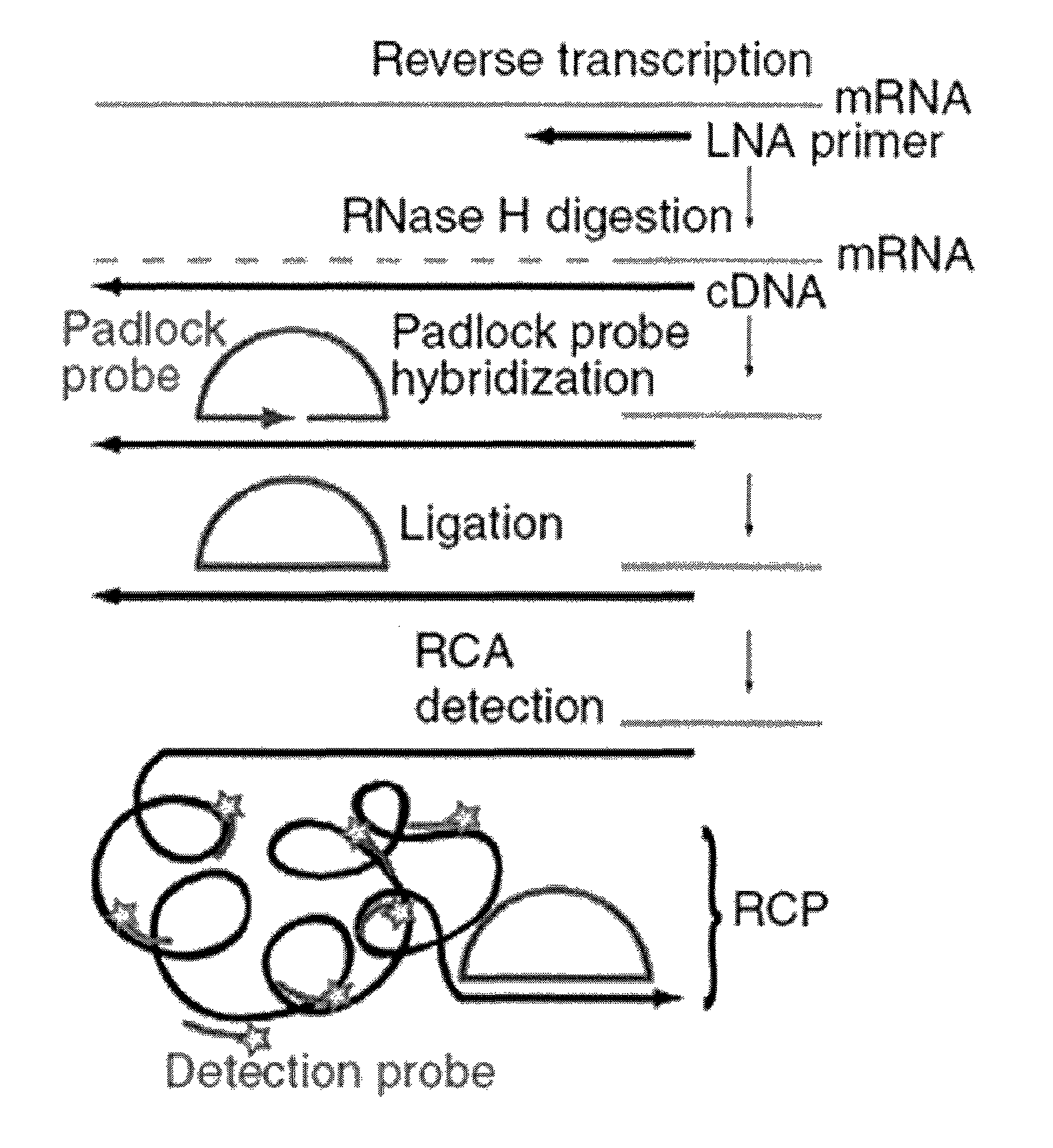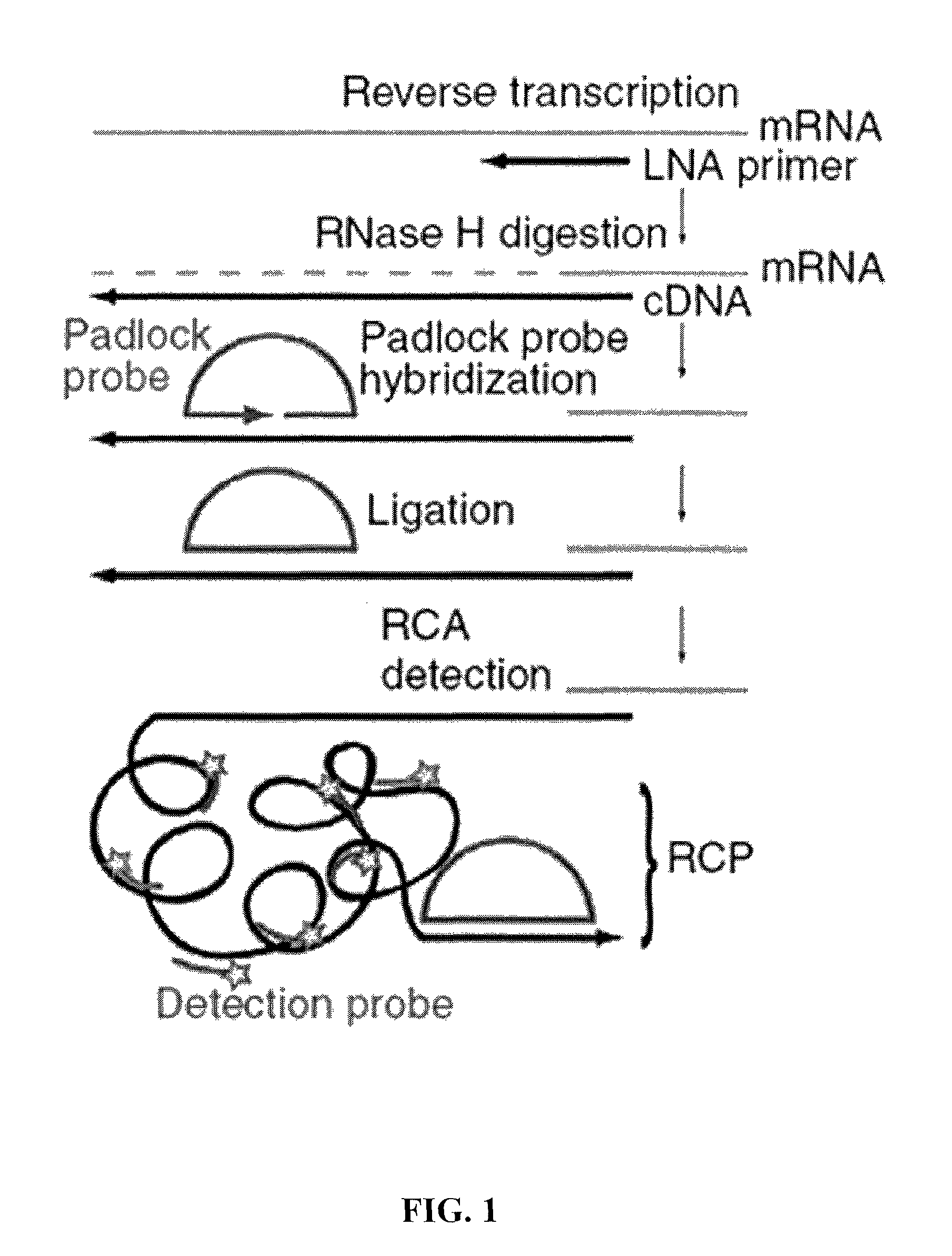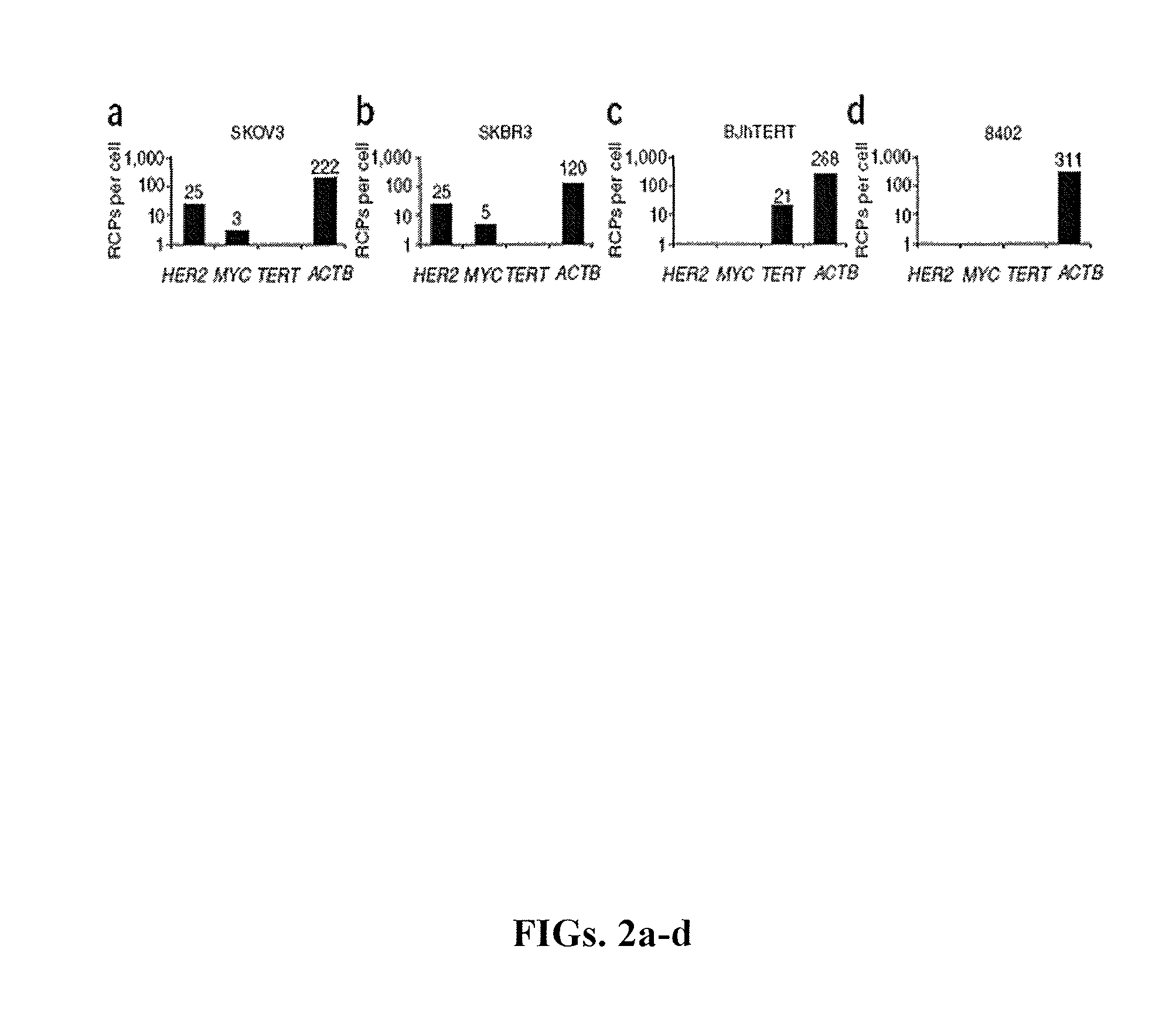Methods for localized in situ detection of mRNA
a localized detection and in situ technology, applied in the field of rna detection, can solve the problem of no other in situ method available today
- Summary
- Abstract
- Description
- Claims
- Application Information
AI Technical Summary
Benefits of technology
Problems solved by technology
Method used
Image
Examples
example 1
Detection of β-Actin (ACTB) Transcripts in Cultured Human Cells Using Padlock Probes
[0278]To detect β-actin (ACTB) transcripts in cultured human cells, two different padlock probes were used targeting sequences in the first and last exon, respectively. Many bright, spot-like signals localized to the cytoplasm of cells were visualized, consistent with previous observations of this transcript consistent with previous reports regarding this transcript. The detection efficiency was similar for the two padlock probes, indicating that in this case detection was not highly dependent on target position along the transcript (FIG. 5). In contrast, when reverse transcriptase was omitted from the cDNA synthesis reaction, no signals were detected, verifying that the signals were cDNA dependent (FIG. 5). It was estimated that the overall in situ detection efficiency to be ˜30% of available transcripts, on the basis of a comparison to quantitative PCR (qPCR) data for β-actin mRNA in the GM08402 ce...
example 2
Detection of Single-Nucleotide Variants of Transcripts in Cultured Cells In Situ
[0279]To demonstrate high selectivity of detection, an assay was used to detect of single-nucleotide variants of transcripts in situ. Expressed polymorphisms are rare in β-actin, therefore a single-base difference between the human and mouse β-actin sequences was used as genotyping target. Co-cultured human and mouse fibroblast cells were subjected to in situ genotyping of cDNA using padlock probes PLP-βhum (human) and PLP-βmus (Mus musculus) and target-primed RCA. There was a clear-cut distinction observed between the two subpopulations of cells in the co-culture. The preference for perfectly matched padlock probes at the circularization step ensures distinction between the two targets by the ligase.
example 3
Detection of Single-Nucleotide Variants of Transcripts in Fresh Frozen Tissue In Situ
[0280]To test the method in fixed tissue sections, closely related skeletal muscle α1-actin (Acta1) and cytoplasmic β-actin (Actb) transcripts were targeted in fresh frozen tissue from an E14.5 mouse embryo cross sectioned at the level of the neck. The two actin transcripts were successfully detected in the tissue using padlock probes designed with target sequences differing by a single base. The α1-actin signals were mainly distributed to skeletal muscles, whereas β-actin signals were widely distributed but showed slightly more signals in the non-muscular tissue. The ability to distinguish three transcripts from the same gene family was demonstrated by including a probe specific for the cytoplasmic α1-actin (Acta1) transcript.
PUM
 Login to View More
Login to View More Abstract
Description
Claims
Application Information
 Login to View More
Login to View More - R&D
- Intellectual Property
- Life Sciences
- Materials
- Tech Scout
- Unparalleled Data Quality
- Higher Quality Content
- 60% Fewer Hallucinations
Browse by: Latest US Patents, China's latest patents, Technical Efficacy Thesaurus, Application Domain, Technology Topic, Popular Technical Reports.
© 2025 PatSnap. All rights reserved.Legal|Privacy policy|Modern Slavery Act Transparency Statement|Sitemap|About US| Contact US: help@patsnap.com



